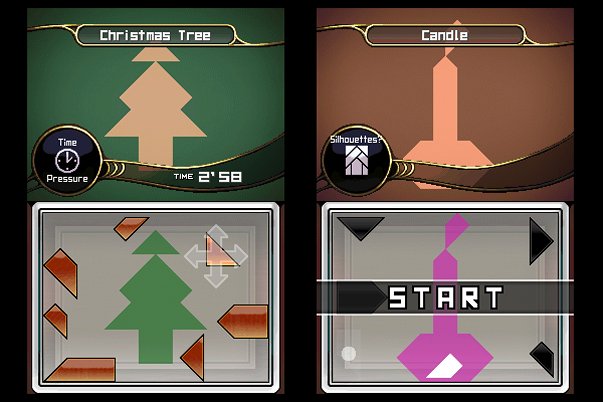Aug 22, 2007
Neves: at first it seemed like the name is too mysterious to be understood by any ordinary gamer, but then we realized that it's seven backwards. Seven because the game uses seven puzzle pieces, and backwards because that's how things work in the fast paced world of DS puzzle games. Deal with it.
If the game looks familiar that's because it's based on the Japanese game Hanayama's Lucky Puzzle - here in the US, you may have heard it called Tangrams (we have some previous experience with Tangrams from grade school). In fact, the game is almost identical to its block arranging real-world forerunner. The seven blocks are turned, flipped and arranged with the stylus until they fill in the silhouette of the shape they are supposed to make.

There are over 500 puzzles to solve and you can play in standard mode, timed or with only seven moves allowed; also, the puzzles are divided into three tiers of difficulty. For us, if second level of difficulty was tough, the third was like trying to put a square peg in a circle slot. Luckily, while playing multiplayer, our opponent was just as dumbfounded by the cleverness of the puzzles.
Matches are tense and nerve-wracking. Your puzzle is on the bottom screen, while your opponent's is displayed on the top, so you can try to cheat off his progress or taunt him by refusing to put the last piece in place until he knows he's lost. Oh, and you only need one cartridge to play wirelessly.
Weekly digests, tales from the communities you love, and more


